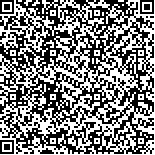| 摘要: |
| Current applications using single unmanned vehicle have been gradually extended to multiple ones due to their increased efficiency in mission accomplishment, expanded coverage areas and ranges, as well as enhanced system reliability. This paper presents a flocking control method with application to a fleet of unmanned quadrotor helicopters (UQHs). Three critical characteristics of formation keeping, collision avoidance, and velocity matching have been taken into account in the algorithm development to make it capable of accomplishing the desired objectives (like forest/pipeline surveillance) by safely and efficiently operating a group of UQHs. To achieve these, three layered system design philosophy is considered in this study. The first layer is the flocking controller which is designed based on the kinematics of UQH. The modified Cucker and Smale model is used for guaranteeing the convergence of UQHs to flocking, while a repelling force between each two UQHs is also added for ensuring a specified safety distance. The second layer is the motion controller which is devised based on the kinetics of UQH by employing the augmented state-feedback control approach to greatly minimize the steady-state error. The last layer is the UQH system along with its actuators. Two primary contributions have been made in this work: first, different from most of the existing works conducted on agents with double integrator dynamics, a new flocking control algorithm has been designed and implemented on a group of UQHs with nonlinear dynamics. Furthermore, the constraint of fixed neighbouring distance in formation has been relaxed expecting to significantly reduce the complexity caused by the increase of agents number and provide more flexibility to the formation control. Extensive numerical simulations on a group of UQH nonlinear models have been carried out to verify the effectiveness of the proposed method. |
| 关键词: Flocking, unmanned aerial vehicles, unmanned quadrotor helicopters, Cucker and Smale, formation control |
| DOI: |
|
| 基金项目:This work was financially supported in part by the Natural Sciences and Engineering Research Council of Canada (NSERC) conducted at the Concordia University and the Region Lorraine conducted at the University of Lorraine under the Hydradrone Project. |
|
| Flocking control of a fleet of unmanned aerial vehicles |
| A. Belkadi,Z. Liu,L. Ciarletta,Y. Zhang,D. Theilliol |
| (CRAN, University of Lorraine, Nancy, France;Department of Mechanical, Industrial and Aerospace Engineering, Concordia University, Montreal, Canada;Lorraine Research Laboratory in Computer Science and its Applications (LORIA), University of Lorraine, Nancy, France) |
| Abstract: |
| Current applications using single unmanned vehicle have been gradually extended to multiple ones due to their increased efficiency in mission accomplishment, expanded coverage areas and ranges, as well as enhanced system reliability. This paper presents a flocking control method with application to a fleet of unmanned quadrotor helicopters (UQHs). Three critical characteristics of formation keeping, collision avoidance, and velocity matching have been taken into account in the algorithm development to make it capable of accomplishing the desired objectives (like forest/pipeline surveillance) by safely and efficiently operating a group of UQHs. To achieve these, three layered system design philosophy is considered in this study. The first layer is the flocking controller which is designed based on the kinematics of UQH. The modified Cucker and Smale model is used for guaranteeing the convergence of UQHs to flocking, while a repelling force between each two UQHs is also added for ensuring a specified safety distance. The second layer is the motion controller which is devised based on the kinetics of UQH by employing the augmented state-feedback control approach to greatly minimize the steady-state error. The last layer is the UQH system along with its actuators. Two primary contributions have been made in this work: first, different from most of the existing works conducted on agents with double integrator dynamics, a new flocking control algorithm has been designed and implemented on a group of UQHs with nonlinear dynamics. Furthermore, the constraint of fixed neighbouring distance in formation has been relaxed expecting to significantly reduce the complexity caused by the increase of agents number and provide more flexibility to the formation control. Extensive numerical simulations on a group of UQH nonlinear models have been carried out to verify the effectiveness of the proposed method. |
| Key words: Flocking, unmanned aerial vehicles, unmanned quadrotor helicopters, Cucker and Smale, formation control |

